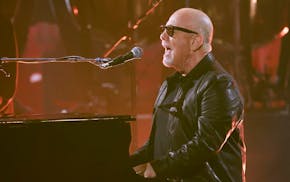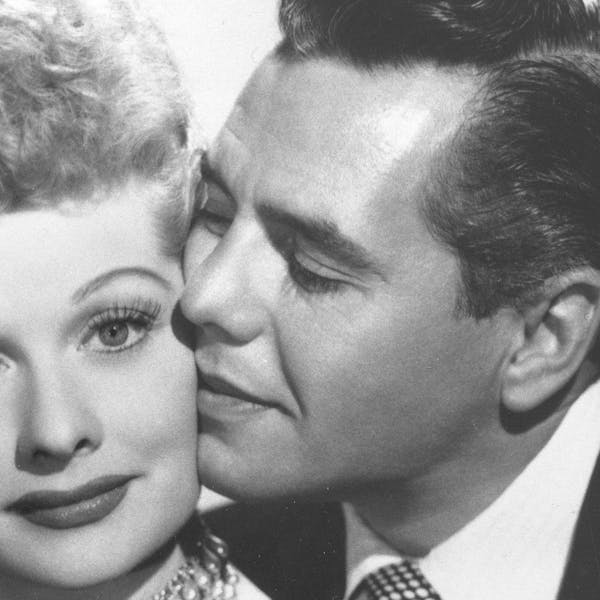When Melissa De Peña moved to Minneapolis a year ago, she quickly discovered restaurants, grocery stores and cultural landmarks that spoke to her Dominican Republican heritage. But it wasn't until she found Univision and Telemundo on her TV set that she truly felt at home.
"In terms of being comfortable here, that really sealed the deal," said the 28-year-old Cargill trader. "It really is my comfort food."
De Peña and others like her are watching Latino networks get savvier, stronger and more sophisticated. Univision is now the No. 4 broadcast network for viewers 18-34 and 18-49 — the age groups most targeted by advertisers — outperforming both ABC and the CW. Among younger viewers, its telenovela "La Tempestad" outdrew the heavily hyped season premiere of "The Michael J. Fox Show."
At the same time, network TV continues to overlook the United States' largest minority group. Last season only 4 percent of characters on prime-time network TV were Latinos, compared with 17 percent in the population as a whole — and those roles were typically gang members or sexpots.
Benjamin Bratt, an actor of Peruvian descent who shot to stardom through "Law & Order," said a big part of the problem is that network decisionmakers don't understand the Hispanic market.
"They're generally middle-aged, white, privileged men who know very little about the Latino American experience," Bratt said. "I would wager the most they get involved with Latinos is telling the gardener what to do or telling the busboy he needs a refill on his water. How could they possibly understand that we are, in fact, the same?"
A numbers game
Much press was dedicated last year to "Good Morning, America's" status as the nation's No. 1 morning show, but in viewership terms it actually had zero growth while rival "Today" slipped.
The real morning success story belongs to Univision's "Despierta América," which averaged 839,000 viewers, up 21 percent from a year earlier. The network's flagship news show, "Noticiero Univision," also enjoyed a terrific season, drawing 15 percent more adults ages 18-34 than the "CBS Evening News."
Rival network Telemundo is also on the rise. It recently had its best August ever, reaching 1.3 million viewers, up 8 percent from last year.
Behind those numbers is an even bigger number: There are more than 52 million Hispanics in the United States, a figure that the Census Bureau expects to hit 133 million by 2050. And while Minnesota's 250,200 Latinos make up only 5 percent of the population, they're the state's fastest growing minority group.
Lots of people means lots of purchasing power. While ad spending on network TV was down 5.2 percent in the first quarter of 2013, Spanish-language channels saw a 13.5 percent increase from 2012, according to the consulting firm Kantar Media.
But numbers only begin to explain the shift. The quality of Latino programming is also on the rise.
Once a sea of trashy soap operas and outrageous game shows, Spanish-language TV now rivals traditional networks in depth and scope. There are Latin versions of everything from "The Voice" to the Discovery Channel. "La Reina del Sur," Telemundo's hit series about a woman running a drug cartel, is closer in spirit to "Breaking Bad" than "Days of Our Lives."
"It used to be enough just for everything to be in Spanish," said Ruben Mendiola, vice president and general manager for Comcast's multicultural video services. "But now we have sophisticated programming that can cater to all Latinos."
Missing in action
TV viewers in the Twin Cities have access to 59 Hispanic-oriented channels. What's more difficult to find: Hispanics on mainstream television.
"Modern Family's" Sofia Vergara may be TV's highest-paid actress, but she got the title by playing a hot-headed beauty with a broken accent.
Actor Luis Antonio Ramos left Los Angeles five years ago after decades of being typecast. "I played bad guys in every show on every network. It was just sucking away my soul," said Ramos, who appeared on ABC's recently canceled drama "Lucky 7."
A recent study by the National Hispanic Media Coalition indicates just how discouraged Latinos are about how they're portrayed on television. Only 5 percent of those surveyed see Latinos frequently in roles as doctors, nurses, lawyers or judges while 64 percent saw themselves reflected frequently as gardeners.
"Would we say Al Pacino can't play a certain character because his name is Al Pacino? Of course not," said actress Rita Moreno, the only Hispanic to win an Oscar, Emmy, Tony and Grammy.
Roberto Orci, chairman of the Association of Hispanic Advertising Agencies, said it isn't just about representation, it's about telling stories that Latinos can relate to.
Orci, who runs Acento Advertising in Santa Monica, Calif., said his company recently worked with Disney on how to sell its animated film "Brave" to Hispanics.
"On the surface, there's nothing relevant about a red-headed lass," he said. "But young Hispanics want to be empowered and make their own way while their family wants them to stick with tradition. That's how we were able to market the film to them."
There are signs that network TV is starting to realize they're squandering a great opportunity. Several shows premiering in midseason will have juicy roles for Latinas, including "Killer Women," based on a Spanish telenovela. Eva Longoria is in talks to star in a new law series, "Vega v. Vega," and her production company is working on "Trust," an hour-long soap based on a Colombian drama.
One of the highlights of this still young season: Fox's new action comedy "Brooklyn Nine-Nine" actually features two Hispanic female characters.
"It never happens that you look over and there's another Latina actress on the same show with you," said Stephanie Beatriz who plays Det. Rosa Diaz on the Fox sitcom. "Plus, we're not doing accents or anything spicy."
612-673-7431 • Twitter: @NealJustin

Neal Justin: Why Conan O'Brien is a national treasure

TV review: 'Jane' is the best heroine for families prepping for Earth Day

CBS will turn the lights back on for Billy Joel concert

TV to watch: Billy Joel offers concert for those of us who aren't big shots


